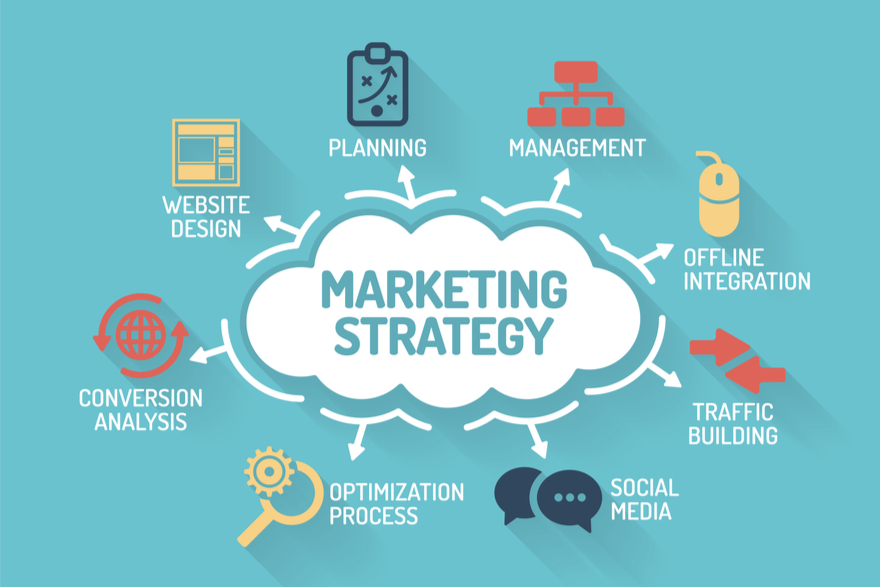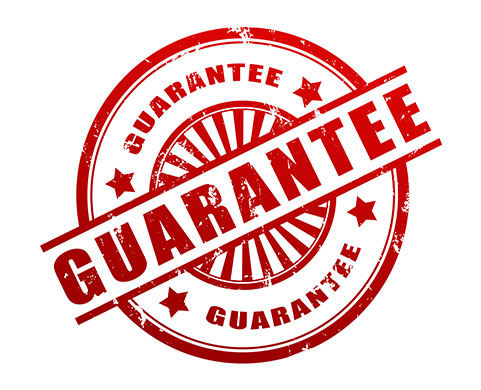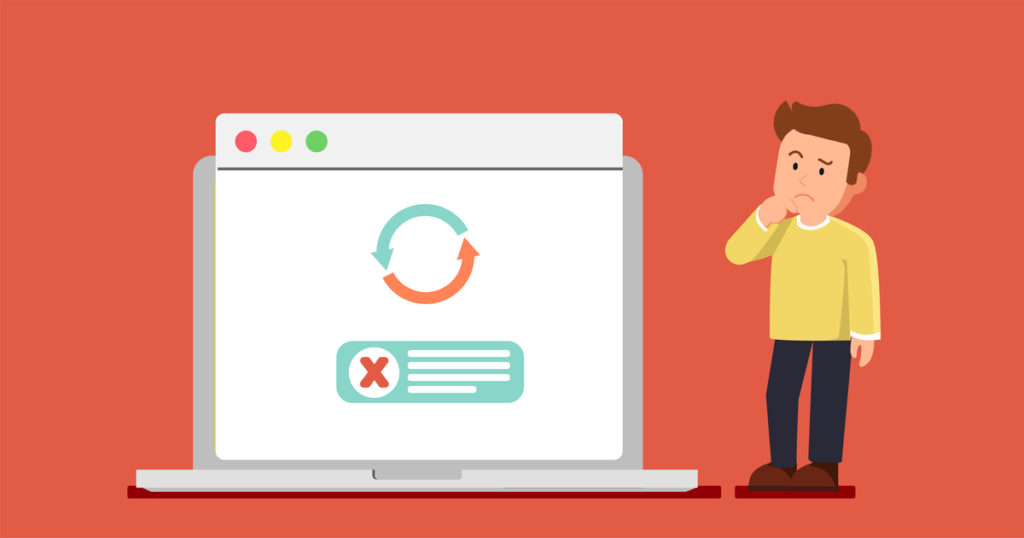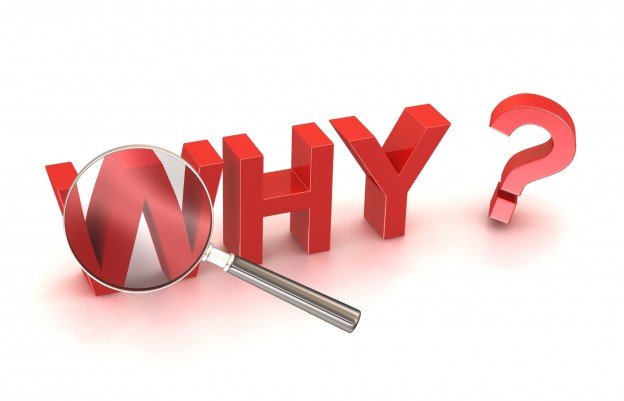
Common Marketing Mistakes That Are Costing Entrepreneurs Literally Millions In Lost Revenue And Profit Each And Every Day
The 11 most common marketing mistakes that are costing businesses literally millions every day and I’ll also explain in step-by-step detail exactly what you need to do to overcome each mistake.
I see it every day. People making marketing mistakes. It’s not that they’re doing it on purpose. No. In fact, these mistakes are being made because people simply don’t realise that what they’re doing is having a detrimental effect on their businesses.
Call it ignorance.
Call it lack of knowledge.
Lack of marketing savvy.
Call it what you like.
The point is that almost every business is making many of these mistakes.
Statistics tell us that 80 percent of businesses go out of business the first year they’re in business. And of those that remain, 80 percent of them will not be in business five years from now.
That’s a scary but true statistic!
Yet, even with what seems like an almost impossible task, people still take their dreams into the marketplace with little or no planning, and with little or no regard for the harshness and cruelty of what the marketplace can bring, without proper planning and ‘marketing savvy.’
In fact the success and failure of any business is almost entirely down to how well a business is marketed – and not down to how good the product or service is – or the people in the business!
This may be difficult for you to agree with at the moment, but as you read through each one of the common marketing mistakes (which I’ll deliver to you every 3 days) you’ll quickly understand that ‘he or she who markets most effectively – wins – and wins big.’
That’s why inferior products and services have stood the test of time. It’s because they were (and are) marketed well – better than superior products and services. And that’s why hundreds of brilliant inventions fail to materialise (only 1 in 5,000 make it).
A good product or service is nothing without effective marketing.
So what do I mean by effective marketing?
To be precise, effective marketing is the ability of the business to consistently and repeatedly get people to buy the products or services they sell and extract as much profit out of each customer over the duration of the relationship.
When you understand what effective marketing means, it’s easy to appreciate why businesses all over the world struggle…
They simply haven’t found a way(s) to generate a constant stream of customers and keep them buying – time after time.
This is WHY businesses fail – or don’t prosper as much as they should. Sure we’ve all heard of the excuses…
· Too much competition
· I have to reduce my prices
· It’s a poor market
· Etc, etc
But when you dedicate a large proportion of your time on effective marketing, then you make your business ‘immune’ to outside factors such as the competition.
Better still…
Because these marketing mistakes are so COMMON, this presents a huge opportunity for you. I guarantee your competition will be making many of these mistakes.
Mistakes they’re not even aware of.
Mistakes you can now transform into winning strategies.
By looking at the greatest mistakes people are making every day, you’ll get an appreciation on why they’re failing. You’ll be able to spot the mistakes before they happen. And you’ll ultimately be in a position to transform each mistake into a powerful marketing strategy that generates windfall profits the moment you take action!
As you read through each mistake, think about your business, and see how you’re doing in each of the areas.
Some mistakes are worse than others. Some can be deadly. But if you catch them soon enough – you’ll have time to act.
And ACT is what you must do. If you keep doing the same thing you’re going to get the same results.
If you can get control of your business and avoid making these costly mistakes, you can expect truly amazing results! That’s the true purpose of this email course…
Identify your mistakes, put them right, and skyrocket your sales and profits literally overnight!
Okay, let’s get started…
Marketing MISTAKE #1 - Not Having A Differentiator

This is one of the most common mistake people make. Let me explain…
A differentiator is the one thing that sets you apart from the competition in the minds of your prospects and clients, customers or patients.
Your differentiator is what makes the difference between having a truly outstanding business or a faltering one.
Often your differentiator can be found in your business – you just need to articulate it in a way that makes you stand out from the crowd.
I can’t stress enough how important this is to you.
How can you expect your clients, customers or patients to be able to choose you, over and above any of your competitors, if they can’t quickly see what it is you do that is so unique and beneficial to them?
Outstanding businesses have been founded on a differentiator alone. For example, here’s a very well known differentiator…
“Red hot pizza delivered to your door in 30 minutes or less – guaranteed.”
Tom Monahan of Dominos Pizza created one of the most successful fast food businesses in the world from the strength of this differentiator. They currently produce $3.4 Billion in revenue!
Please don’t dismiss the importance of having a differentiator.
I guarantee your competitors are unlikely to have one. This will make a massive difference to the growth and profitability of your business.
Plus, there are other factors to consider…
If you are viewed by your clients, customers or patients and prospects to be the same as your competitors, what do you think becomes the important criteria when they want your product or service?
That’s right – price.
There’s no hiding the fact that as soon as you create your differentiator you automatically take your business out of the “price war” and into the nirvana of higher prices/fees – and less competition!
That’s the power of a differentiator.
Marketing MISTAKE #2 - Marketing To Everyone

“You can’t be all things to all people.”
I know this may come as a shock to you, but it’s true.
You cannot hope to market your products or services to everyone, even if you think everyone needs them.
I’m not saying you can’t be successful doing this. What I’m saying is you really do limit your potential by not focusing on select groups of people or businesses. These specific groups are called “target markets”.
By focusing on one or more target markets you’re able to connect with these people at a much higher level, and consequently you automatically gain more business.
I’m sure you’ve heard people say things like, “This person really connects with me, they really understand my business.” This is what you do when you choose to market to these different groups.
Think about it…
What’s also important to understand is that certain groups of people or businesses are more likely to want and need your products and services more than others.
More importantly your target market must focus on the groups who can AFFORD your products or services.
There’s no point in targeting groups who want and need your products or services if many of them can’t afford to buy or pay for them!
A common question I’m often asked is this – “If I limit my market won’t I be reducing the chances of doing business with more people?”
Of course you will, but to succeed in today’s competitive market place you need to concentrate your marketing on a smaller number of well chosen segments or niches into which you pour all your resources.
Because you are targeting smaller numbers, the same amount of money you were previously using to acquire clients or customers, is spread across a smaller number, and therefore you have more to spend on each prospect than you would if your market was bigger. This alone makes you more successful.
In a nutshell your target market is the segment(s) that represents your best chance of getting a good return for your marketing efforts.
These target markets are critical to you.
Of course, if you focus on a smaller group you may not get the business of other people or businesses outside the target group. However, what actually happens is you increase the amount of business you receive from your target market(s).
This is because you are specifically meeting needs and requirements of your chosen market.
You’re saying to them that, ‘you are THE company that knows about their situation’.
No other company specifically meets their needs in this way, and therefore you are seen as the logical company to turn to.
Here’s an example to show the power of defining your market or niche…
Let’s say you’re a start-up business and you need an accountant. Your first choice is to look in the local newspaper. Although there are a number of small ads the first one you see reads…
‘ABC Chartered Accountants. Tax preparation, auditing, bookkeeping, payroll services and management accounts, for all types of businesses.’
The second ad reads…
‘XYZ Chartered Accountants. Specialising in helping Start-Ups get their businesses running quickly, profitably and effectively.’
Which firm of accountants are you likely to choose?
The answer is obvious, but it serves a good example to show how effective this strategy is – yet how widespread it is that few businesses follow this simple approach!
The first ad is trying to be all things to all people and is a very common approach.
The second ad is completely focused on ‘start-ups’ and therefore is much more likely to get start-up business owners contacting them and in much higher numbers.
If you can create this bond between you and your target market(s) I guarantee you’ll grow your business to unprecedented levels.
That’s the power of target marketing.
By concentrating on specific groups, you can achieve very high market shares in that particular category because people automatically come to you.
You’ll ‘own’ the market.
You are viewed as the only choice because your product or service is ‘designed’ to solve the specific problems of those people.
Not focusing on one or more target markets is perhaps the biggest mistake people make!
Marketing MISTAKE #3 - Launching Your Sales & Marketing Without Preparing & Using The 'Core Elements'

Benjamin Franklin said…
“By failing to prepare, you are preparing to fail.”
Nothing could be more true with sales and marketing.
For example, I could show you literally hundreds of different ads and sales letters sent by businesses, which are so poorly written it would be a miracle if a response was generated.
This is the norm.
It is extremely rare that you see any sales letter, website or other marketing strategy even close to average in standard. The sole reason for this is lack of preparation.
Your sales and marketing are your “building blocks”.
You must build them step-by-step, piece-by-piece.
This does take time initially but the rewards are astounding if you take the time to get them right and include all the important elements that are necessary to achieve success (for example, you must use all 5 Success Keys of The FORMULA).
I don’t care what product or service you’re selling you need to go through the same preparation as the next person.
The one difference is your content – the stuff that makes you unique.
But for example, every successful marketing strategy, whether it’s a web page, an email, a sales letter and so on must include the elements that make marketing work. These are called the ‘Core Elements’.
There are 9 of them.
In short, they are the tactics that make marketing work.
Here they are…
- Target Market
- Differentiator
- Headlines
- Irresistible offer
- Social Proof
- Features & benefits
- Call To Action
- Guarantee
- Reasons Why
Marketing MISTAKE #4 - Only Using A Small Number Of Sales & Marketing Strategies

It amazes me that people come to me and say things like, “I’m just not able to grow my business. I’ve tried lots of things, but nothing seems to work.” The first question I ask is this…
“How many marketing strategies are you using at the moment?”
I think you can see where I’m going with this.
The reply often goes something like this…
“Well we have a website, we send emails, we post on our Facebook page and send some letters out.”
Now I’m not saying you can’t have enormous success just from using these strategies, but just think what you could do if you used 5, 10, 15, 20 or more proven and cost-effective marketing strategies to grow your business? What effect would this have if each marketing strategy was working and returning a profit for you?
Marketing MISTAKE #5 - Using 'Institutionalised' Marketing & Advertising

I would say 99% of business owners use this technique.
Institutional marketing and advertising is marketing and advertising that doesn’t ask for a direct and instant response.
For example, it is characterised by ads that have the company name as the headline at the top of a print ad or web page…
Very little copy on the ad…
A list of products or services provided by the company…
Lots of white space…
No incentive to call now… etc.
Pick up your local newspaper of a magazine and go to any page. You’ll see this type of ad all over the place.
I urge you to stop this now. Institutional marketing and advertising is costing you thousands of pounds.
Institutional or image advertising is fine if all you want to do is promote the image of your company, your products, or the services you offer.
But let me tell you – image itself doesn’t generate sales!
And when you consider the fact that your clients, customers or patients and prospects really don’t care about you, your business or what you sell all they care about is ‘what you can do for me’. That explains why to a small and medium sized business, image or institutional advertising is a complete waste of money.
Always remember this…
People don’t buy your product or service – they buy the result. They buy ‘what’s in it for me’. They buy a solution to their problem(s).
It’s true that institutional or image advertising can help build “brand-awareness”.
And that’s okay for large corporations such as Coca-Cola, that have multi-million pound advertising budgets (having said that, these companies would prosper even more if they used direct response advertising).
But most small or medium size businesses simply cannot afford to spend their hard-earned money like this.
What would you prefer…
Marketing and advertising that generates sales, almost immediately (direct response), or advertising that builds your name awareness or ‘brand’ (institutionalised advertising) in the hope that sometime in the future someone who wants your product or service remembers your ad and may or may not decide to buy from you?
Do you really have any option?
I guarantee as soon as you start writing direct response marketing and advertising, your results will skyrocket. For example, those characterised by powerful headlines, large amounts of copy written in a very personal style, cluttered ads, a reason to call now and a free bonus for calling (special report etc) etc., …you’ll increase your responses and sales many times over.
Break from tradition.
Start creating marketing strategies that give you a fast and immediate response, that you can monitor and assess in terms of cost and return. You’ll save money and make much more money by following this advice!
Marketing MISTAKE #6 - Failing To Use Testimonials

Let’s be honest – selling isn’t easy.
Unless you convince your prospect your product or service will give them the result they’re seeking, you won’t get the sale.
And what you say is often taken with a ‘pinch of salt’.
After all, we’re all sceptics these days.
So how can you almost instantly prove to the prospect you can deliver on your promises?
It’s actually much easier than you may think. All you need to do is use client, customer or patient testimonials.
Again, I can’t tell you how often I see businesses trying to sell and market their products or services without the use of testimonials.
You make your life very, very difficult if you don’t use testimonials. Testimonials have the power to get clients or customers by the handful.
And remember, ever since Amazon first created ‘reviews’ they changed forever the way people now buy.
And because of that, testimonials are even more important now.
Notice the number of benefits in this one testimonial alone…
- Understanding and helpful
- Took time to talk
- Returned many calls
- Nothing was too much trouble
- Helpful home visits
· Worked hard to get the best result
(Please Note: Each testimonial when shown includes the full name and partial address of each client, although I’ve omitted them here for obvious reasons)
You can’t have enough testimonials.
Place them in all your marketing communications. Place them in every place where your prospects will see them – in your offices, in your reception areas, on your walls, in your website and landing pages.
Blow them up and parade them. You’ll see an immediate and noticeable difference in your sales and profits once you start using testimonials.
Marketing MISTAKE #7 - Not Using A Guarantee

Listen to me carefully…
If you put in place a powerful guarantee today, you’ll be staggered by the success it achieves for you in the coming days, weeks, months and years.
As you know, the benefit of your product or service is gained only after the sale is made.
Sometimes this can be days, weeks, months or even years after the first sale was made. This in itself places an enormous risk on the shoulders of would-be clients or customers.
It’s this risk that often prevents them from buying.
However, if you lower or eliminate the risk, then the natural consequence is people will be more inclined to buy from you.
That’s the secret of creating a powerful risk reversal.
Your risk reversal is nothing more than a simple method that takes the ‘barriers’ away from the prospect, and ensures they keep progressing towards the sale.
As soon as you add a risk reversal or guarantee to your business you…
- Remove the risks, gaining more clients, customers or patients
- Automatically differentiate your business from your competition
- And, your prospects will value your products or services much more, because they’ll automatically assume your product must live up to expectations or you must be excellent at delivering your service (why would you offer a guarantee if your product or service wasn’t great?).
The result is a BIG increase in sales, and an avalanche of new clients, customers or patients!
The ultimate is to guarantee the result or main benefit of your product or service and add a ‘penalty’ should your service or product fail.
Hopefully you now have a basic grasp of guarantees and reversing the risk and what it can achieve for your business. If you’ve given any thought to the strategy one question may be entering your mind…
“What about people taking advantage of my guarantee, won’t people try to abuse what I’m offering?”
The key of course to successful risk reversal is this – if you offer a good product or service and you only guarantee what you control, then you have nothing to worry about.
Unfortunately I cannot say no one will ask for a refund or for their money back (or whatever your guarantee states).
What I can say is that for every one of these, you will attract many many more prospects and clients, customers or patients by simply offering a risk reversal in the first place.
Don’t worry about this.
Your risk reversal strategy is usually the one thing that tips the scales in your favour. Because you offer risk reversal your prospect thinks and assumes the following things about you…
1). If you’re offering this risk reversal guarantee, you must be very good at what you do
2). You must be foolish to offer such a guarantee if you were poor at delivering your promises
3). In the prospect’s mind, your risk reversal has ‘proven’ to him or her that you can give them exactly what they need.
4). More importantly, when most people choose to buy a product or service, they choose it for perfectly good reasons and intentions. And they spend time making their decision. They wouldn’t choose you in the first place if they wanted to capitalise on your guarantee.
Marketing MISTAKE #8 - Not Converting The Features Of Your Product or Service Into Compelling Benefits

You’ve probably heard this a thousand times…
Everyone knows they should talk about benefits and not features yet nearly everyone persists with selling features.
Remember, people don’t buy what your product or service does (features), they buy the result – or the benefits of your product or service.
This is a well known sales technique that’s been around for literally centuries.
It’s a basic fundamental principle, yet people still don’t effectively communicate the benefits of the product or service they sell.
But what really counts is communicating the benefits your product or service provides over and above your competitors.
Now you’re building up a massive competitive advantage.
By ‘stacking’ each benefit on top of each other (‘Benefit Pile-Up’) you create so much desire that your prospects find you irresistible, and are almost ‘forced’ to buy from you rather than your competitors.
By the way, converting your features into benefits is so easy to do…
The best way to do this is to get a piece of paper, draw a line down the middle and write ‘Features’ on the left side and ‘Benefits’ on the right side.
First let’s take a simple ‘product’ to show you how easy this is.
Here are 4 features and the corresponding benefits of a desk top hole punch (if we can get four benefits out of a very basic inanimate object you should be able to get at least the same amount for your product or service!)…
Feature #1
Hole punch is made of hardened steel.
Benefit #1
It will last forever. You will never have to buy another one as long as you live.
Feature #2
The base has a plastic cover.
Benefit #2
The base collects all the punched out paper, which ensures your desk stays clean and scratch free, no matter how often the punch is used.
Feature #3
The base is removable.
Benefit #3
Once the punch is full you simply clip off the base and place the excess waste into your bin. Easy to empty and it leaves no mess.
Feature #4
The punch has a plastic guide for your paper
Benefit #4
Simply adjust the sturdy guide to the size of paper you want to punch. You get perfect results every time.
Do you see how easy this is?
…and notice how much more ‘desire’ you create when you convert your features into benefits.
This simple act of defining benefits adds so much power to your sales and marketing you’ll wonder why you didn’t do it sooner.
Marketing MISTAKE #9 - Not Giving Reasons Why

Just saying your product or service is this or that much better than your competitors’, isn’t going to be enough to convince your prospects.
You must always give reasons why.
For example, let’s take a cliché that many people use – “our service is the best”.
On its own, this phrase is meaningless.
It’s regarded as hype – and therefore instantly unbelievable.
But if you give the reasons why your service is the best, your claim suddenly becomes more believable.
People assume (wrongly) that their prospects will make choices based on minimal information.
Sometimes that’s true, but in the majority of cases your prospects need more information to be able to act decisively, and choose you before your competitors.
They need reasons why.
Here’s why…
Before a prospect buys your product or service they are asking themselves many important questions…
- Why should I pay this price for this product or service?
- If the price ‘seems high’ why should I pay more for it?
- If the price ‘seems low’ why is it low, is it inferior?
- Why should I choose you over other businesses providing the same product or service type?
- What makes your product or service better than others?
- How do I know you won’t let me down?
I could go on and on, but you get the idea.
Now what do you think happens if you don’t answer all these relevant concerns?
That’s right, the prospect will turn to someone else.
It goes without saying that in order for you to acquire BIG increases in sales you have to give reasons why.
What does that mean?
It means you need to explain clearly why you charge higher than your competitors, you need to explain how and why your product or service is better than your competitors and so on.
Tell them about your expertise.
The rigorous lengths you take to recruit your staff.
How long you spend training your staff.
What steps you take to ensure customer satisfaction, and so on.
This stuff is important – really important.
It provides the rationale behind your prospects decisions and helps cement the sale.
Often we think that if we say too much it will repel our prospects. Nothing could be further from the truth.
Tests have proven time after time that as long as a prospect is interested in your product or service they are willing to consume large amounts of information – as long as the information you provide is interesting and informative.
The more relevant information you provide the easier it becomes for your prospects to make an informed decision. And as long as you give ‘reasons why’ you’ll generate many more sales than ever before.
Marketing MISTAKE #10 - Writing To Your Customers In A Non-Personal Way

I am amazed at how frequently this occurs.
When you communicate with your clients, customers or patients, please use their name. Don’t ever write to your clients like this…
- Dear Client
- Dear Valued Client
- Dear Sir/Madam (yes I still receive letters like this – I’m sure you do too)
This sounds really obvious but it happens regularly. If the person you’re writing to is a client, customer or patient, treat them like you would a friend.
NEVER write to your clients like this again.
Here’s how to do it…
- Dear John
- Good Morning John
- Hi John
- Dear Mr Jones (I prefer not to use this naming convention, as it’s very formal, but it’s still personal)
If at the beginning of the relationship you would rather be more formal you should use the following greetings…
- Dear Mr Brown
- Good Morning Mrs Jones
Think about it…
If you’re a ‘Valued Client’ why hasn’t the business taken the time and effort to write to you personally?
For many people this is very irritating. It’s a sure-fire way to annoy and even repel people from using your products or services in the future.
And don’t forget…
…one of your ultimate objectives is to nurture your relationships so you can ethically extract as much profit as you can out of your existing clients, customers or patients.
Using their name is a good start!
Marketing MISTAKE #11 - Not Checking Your Communications For Spelling Mistakes & Other Simple Errors

I’ve got three files full of letters/adverts/fliers etc., that haven’t been checked properly.
They’re ridden with mistakes.
Basic mistakes that could and should have been avoided. (I’ve included a couple of great examples below)
Remember this…
Every marketing strategy you activate has an up-front cost.
Some strategies such as advertising (online and offline) and direct mail can cost thousands – especially when you make simple and avoidable mistakes.
Mistakes in any form can be very costly.
They make you look sloppy.
They make you look amateur.
They make you look like you don’t care.
Are these the feelings you want to portray?
Now, I appreciate, we’re all human and we all make mistakes, but what I’m really talking about is NOT even thoroughly checking for mistakes before launching a campaign.
If you’re writing your own material it’s often very hard to see the mistakes because you’re too close to the project.
That’s why you must get someone else – even your partner to check your work before it gets released.
Irrespective of the tight deadlines you may have – you must never, ever launch a marketing campaign (no matter how small) until you’ve checked and double checked for mistakes.
Here’s a simple example – can you spot the mistake?
In my experience, it’s highly likely that you are committing at least 5 of these mistakes… so this Information will be highly valuable to you and significantly profitable.
You’ll be able to apply each of the solutions to your business quickly and easily, so each week you should see an improvement in your results.